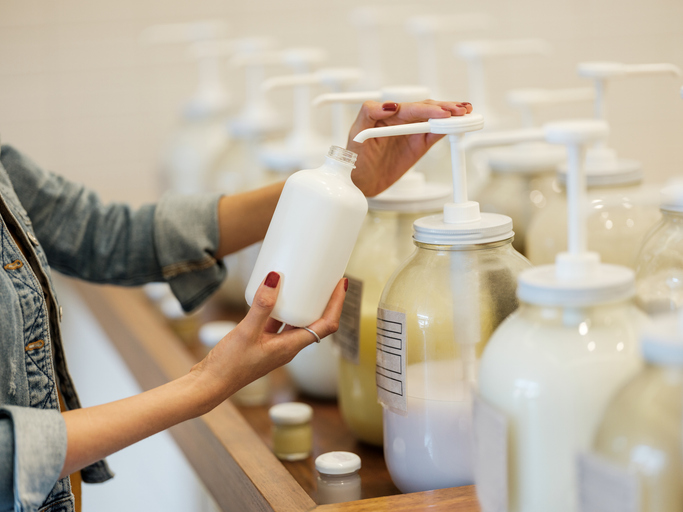Thursday, November 21, 2024
Companies are looking for solutions to reduce the environmental footprint of their packaging, as this will soon be a legal requirement
Source: Colpisa
After a trip to the supermarket, most people come home with at least a few containers. You’ll come across them anytime you’re buying cosmetics, or if you order a combo with drinks at the movie theater. Packaging is a basic part of everyday life- most products can’t be distributed without it. But it's also a big problem for the environment, because it needs to be specifically and selectively recycled when we finish using it so that it doesn’t end up in the trash.
However, both the regulations mandating greener practices and corporations' own strategies—aimed at reducing costs and their environmental footprint—are pushing packaging towards a reinvention. The law now stipulates that packaging will need to weigh 13% less by 2025 than it did in 2010 or be completely recyclable by 2030. European regulations also require recycled materials, such as plastics, be used in its production.
As part of European Week for Waste Reduction, Ecoembes reminds us that the ultimate goal is to achieve full packaging circularity. Basically, this would mean that packaging would be reintegrated into the product lifecycle after use, rather than becoming waste.
"While the journey toward reduction and reuse is challenging, the efforts of companies are making a real difference," notes Begoña de Benito, Director of External Relations at Ecoembes. "This push not only helps us comply with current regulations, but also moves us toward a more circular future," she explains.
This is where eco-design comes in. This type of design is based on the idea that packaging can be more sustainable right from the start. What's important here isn’t just recycling, but also considering the materials and resources used to create the packaging and the impact they have on the products they protect. By taking a holistic view of packaging, its footprint can be reduced from the very outset.
Companies are already changing their packaging to make it more sustainable. In the latest Ecoembes Prevention and Eco-Design Business Plan 2021-23, eco-design measures have saved approximately 78,600 tons of raw materials, reduced over 1 million tons of CO2 emissions, and avoided the use of 18 million cubic meters of water.
Ecoembes estimates that 5.81 billion packaging units were improved over this period thanks to the eco-design efforts of 2,048 companies. Companies of all sizes took part, but small and medium-sized enterprises played a particularly notable role, as 62% of the participants in the biannual plan were SMEs.
But what exactly is being done to make packaging more sustainable? According to the organization's data, the most common approach among companies is to focus on reduction. This is the goal of 68% of the eco-design measures they’ve implemented, reducing the amount of packaging needed or minimizing the environmental impact of inks and materials.
A single adjustment can sometimes have a domino effect that increases sustainability. Eliminating excess space, for example, can increase product volume, or moving the container opening to the bottom can improve efficiency.
Recycling initiatives follow closely in popularity, accounting for 29% of the eco-design measures implemented. They range from using recycled materials to switching to materials that are easier to recycle later. Or, if a single material can't be used, making it easier for consumers to separate it at home and put it in the right recycling bin.
"Currently, 96% of Nestlé Spain's packaging is designed to be recyclable," says Jordi Aycart, Head of Safety, Health, and Sustainability at Nestlé Spain. "We used various eco-design strategies to get here, focusing on reducing material and virgin plastic use, increasing recyclability, developing collaborative circularity solutions, and reusing packaging," he explains. You can see this, for example, by opening one of their boxes of chocolates and looking at the materials used. "This change has resulted in a 14% reduction in CO2 emissions," he adds.
Compared to other areas, packaging reuse still plays a relatively small role, accounting for only 3% of the eco-design measures. These efforts are aimed at extending the useful life of packaging or offering products in refillable systems.
This is what L'Oréal is doing, for example. "We’re fully committed to the 'refill' format and aim to make 100% of our plastic containers refillable, reusable, recyclable, or compostable by 2025," says Delia García, Director of Sustainability and Positive Impact for L'Oréal Group in Spain and Portugal.
The company has developed its own eco-design methodology called SPOT, which, as the director explains, uses "14 factors to measure and improve the environmental and social impact of our products." "Today, more than 3 out of 4 of our PET plastic containers are made from recycled materials and 97% are designed with eco-design principles in mind," she states.
¿Te ha parecido interesante?





